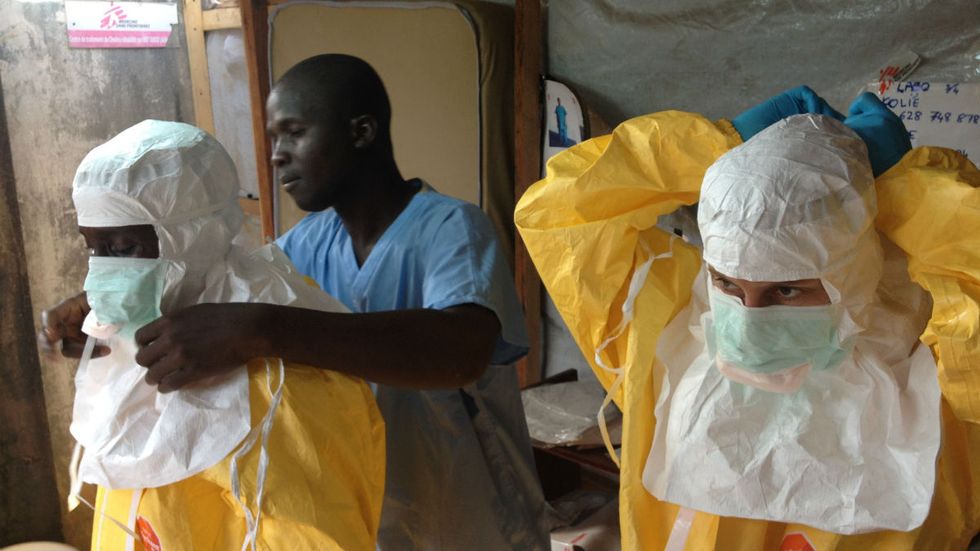
© 2024 Blaze Media LLC. All rights reserved.
A pneumonic plague known as the “Black Death” is threatening sub-Saharan Africa.
Here’s what you need to know about the plague that causes devastating sickness – and sometimes death – to those infected.
What happened?
An extremely deadly plague has broken out in Madagascar, causing the deaths of over 124 people and 1,300 more infected since August. The disease has become particularly infectious because it has taken on the pneumonic form.
This means that the plague can be acquired through airborne particles spread by merely sneezing or coughing. It has also commonly been spread through flea bites, according to health officials. Health officials are warning that the disease is not yet under control.
How did it start?
Cases of the plague commence in Madagascar every year in rural areas, usually during the rainy season. Health officials are particularly concerned that this deadly outbreak began much earlier than expected.
Where is it spreading?
The Black Death is currently contained within Madagascar, but due to heavy tourism, there is the possibility that the plague can spread elsewhere.
The World Health Organization has issued warnings to nine neighboring African countries. The countries determined to be at immediate risk are as follows: Kenya; Ethiopia; South Africa; Mozambique; Tanzania; Reunion (a territory of France in the Indian Ocean); Mauritius; Seychelles; and Comoros.
What are the symptoms?
Symptoms of the plague include fever, aches, vomiting, and nausea. It can also cause inflamed lymph nodes that create open sores, coughing, and chest pain. If not treated, the plague may eventually cause shock and organ failure.
Once acquired, the plague should be treated with antibiotics as soon as possible, WHO officials say.
WHO staff in #Madagascar are working with health authorities to coordinate response, reduce #plague infections & mortality pic.twitter.com/Ev8Iauz5OO
— WHO (@WHO) October 23, 2017
The bubonic plague has devastated humanity
Historians believe that more than half of medieval Europe (or around 50 million people) may have been wiped out by the bubonic plague in the 14th century. At the time, there were no working treatments for the plague, and most perished within two to seven days of showing symptoms.
Madagascar issues plague warning over traditional dance with the dead ritual pic.twitter.com/9vQwOi9kev
— AFP news agency (@AFP) October 26, 2017
Why is it spreading so fast?
Some chalk this up to cultural customs in Madagascar. According to AFP, there is a local ritual of celebrating the recently deceased by wrapping up their dead bodies and dancing with them.
“If a person dies of pneumonic plague and is then interred in a tomb that is subsequently opened for [the ritual], the bacteria can still be transmitted and contaminate whoever handles the body,” warned Willy Randriamarotia, the Madagascar health ministry chief of staff.
Some locals interviewed by AFP say the plague is a giant conspiracy meant to rig the next election. They pledged not to stop dancing with their ancestors’ bodies.
“I don’t want to imagine the dead like forgotten objects. They gave us life,” Helene Raveloharisoa told AFP. “I will always practise the turning of the bones of my ancestors – plague or no plague. The plague is a lie.”
Another local, Josephine Ralisiarisoa, added: “The government in power is short of money for the next presidential poll (in 2018), so they invent things to get cash from lenders … I have participated in at least 15 famadihana ceremonies in my life. And I’ve never caught the plague.”
The most interesting stories aren’t told in the headlines. They’re in the FOOTNOTES!
Get Conservative Review’s daily roundup of the most interesting, underreported, and unconventional news. Sign up today!
Want to leave a tip?
We answer to you. Help keep our content free of advertisers and big tech censorship by leaving a tip today.
Want to join the conversation?
Already a subscriber?
more stories
Sign up for the Blaze newsletter
By signing up, you agree to our Privacy Policy and Terms of Use, and agree to receive content that may sometimes include advertisements. You may opt out at any time.
© 2024 Blaze Media LLC. All rights reserved.
Get the stories that matter most delivered directly to your inbox.
By signing up, you agree to our Privacy Policy and Terms of Use, and agree to receive content that may sometimes include advertisements. You may opt out at any time.


